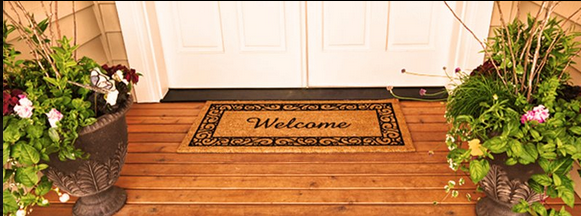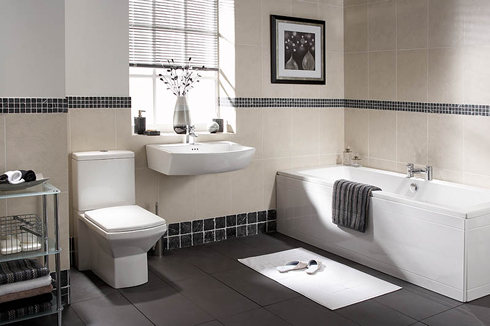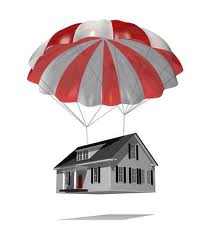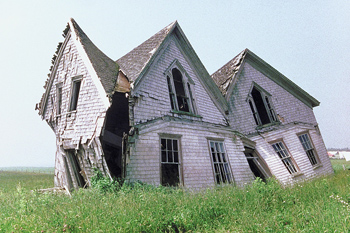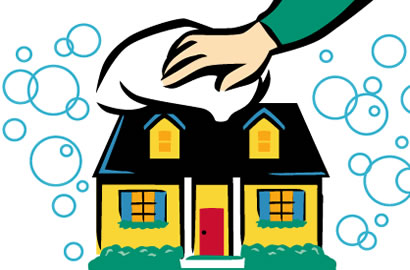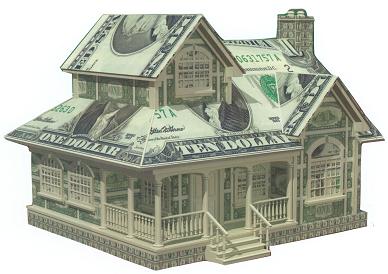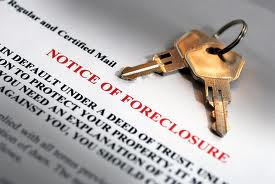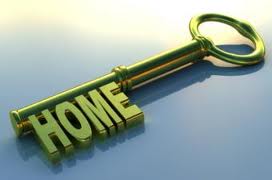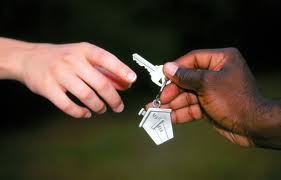
BLOG
Home Prices Pick Up at Fastest Pace in 7 Years
Sellers, if you were on the fence about selling your home, this should help you make the right decision! Call me for a FREE CMA on your home! Laura Key 310.866.8422
Home prices nationwide, which includes distressed sales, soared 10.2 percent year-over-year, according to CoreLogic’s February report. It’s the largest year-over-year increase in home prices since March 2006. It also marks the twelfth consecutive monthly increase in national home prices, according to CoreLogic’s report.
When excluding distressed sales, home prices rose 10.1 percent year-over-year in February, according to CoreLogic.
“Nationally, home prices improved at the best rate since mid-2006, marking a full year of annual increases and underscoring the ongoing strengthening of market fundamentals,” says Anand Nallathambi, president and CEO of CoreLogic.
CoreLogic predicts that home prices -- excluding distressed sales -- will likely rise 11.4 percent year-over-year from March 2012.
“The rebound in prices is heavily driven by western states,” says Mark Fleming, CoreLogic’s chief economist. “Eight of the top ten highest appreciating large markets are in California, with Phoenix and Las Vegas rounding out the list.”
The five states with the highest price appreciation as of February 2013, according to CoreLogic, were:
- Nevada (+19.3%)
- Arizona (+18.6%)
- California (+15.3%)
- Hawaii (+14.6%)
- Idaho (+13.5%)
Source: CoreLogic
In A Hot Market...Bid First...See House Later
The market is so hot right now it seems the only way to even have a chance at purchasing a home is to put your offer in a contingency to view and inspect the property. What are your thoughts on this process? Is this creating another false bubble? Laura.A.Key@gmail.com
As soon as it hit the market, the four-bedroom Sea Cliff home inspired a bidding war, with the top two prospective buyers both offering well above the multimillion-dollar listing price, in cash.
In today's fevered real estate market, that's no longer unusual.
But there was a twist: Both bidders were located in China, and both made their big-bucks offers without ever setting foot in the house. One of them ended up buying the house for $3.1 million, substantially above its $2.8 million list price.
"At first, I was really, really surprised and kind of suspicious," said Nina Hatvany of Pacific Union, the listing agent. "I was concerned that they hadn't seen the property. After all, they might not like it when they saw it."
But since both offers looked serious and included proof of funds, "I said to the sellers, 'This seems like a new buyer profile. You might as well take it.' "
Buying homes sight unseen is a small but growing trend in the Bay Area, fueled by the over-competitive market and burgeoning interest by international buyers - and enabled by technological advances.
Buyers might make offers without seeing a house for several reasons: They live elsewhere or are away for business or personal reasons; they had scheduling conflicts and couldn't visit before bids were due; they're investors accustomed to buying just based on property characteristics; or they're taking a scattershot approach of making lots of offers and seeing which get accepted.
Not completely blind
Today's array of tech tools means they're never truly buying in the dark, however. Besides extensive photos and video tours of homes for sale, plenty of websites offer the chance to learn about neighborhoods and schools, and research comparable sales.
Often, those who bid sight unseen have a chance to tour the house during escrow and can still back out. But sometimes, as in the Sea Cliff case, they're willing to pay huge amounts based on photos, videos and their agent's recommendation. (The winning Sea Cliff bidder also had a family member visit.)
Professional investor Paul Livson of Danville has been buying and selling properties for 30 years, both for rental income and to resell. Bidding before visiting is a tactic he and others increasingly adopt, he said.
"Lots of people are doing it now because they know they need to get their offer in quickly," he said. "The market conditions are such that if you wait to see it, if it's any kind of decent deal, there are already five to 10 offers on their way, and yours will be at the back of the pack. I need to be at the front of the pack."
And while he bids blind, he never buys blind.
"The risk is limited because you have an inspection period, so there's always an opportunity to see it and walk away" if it's not up to snuff, he said.
Still, there can be surprises. He's now buying a Pleasanton condo for $279,000. When he first saw the unit - after his offer was accepted - some issues surfaced: cigarette odors, marred floors, outdated bathrooms. Since it's a short sale, in which a bank has final say, it will be difficult to negotiate the price down based on the unit needing work, he said.
But he won't walk away. "With market conditions the way they are, it's still a good value for me," he said.
Riskier deals
Some sales, such as courthouse auctions that are the final stage in the foreclosure process, don't offer a chance to see properties in advance, nor is there an inspection period. While many investors bid at those auctions, "that's much more risky to me," Livson said. "I don't like to buy without having at least a day or two to inspect it. You could have a property that looks great on the outside but has $50,000 worth of termite damage.
His agent,said she's increasingly representing investors who want to bid sight unseen for efficiency, and she has created a "buyer concierge" program in response. "We hunt the properties for them," she said.
Some agents worry that such bidders muddy the waters.
"I am concerned about buyers feeling that this is a viable option in competition," said Bebe McRae of the Grubb Co., who has sold some properties to people who bid blind. "I heard seven offers yesterday on (a property) and the deciding factor for the sellers in choosing the winner was all about the confidence they felt in the buyers being able and willing to close successfully. The buyers went to the property on several occasions and also did their inspections prior to writing the offers."
People who have made the leap of faith to bid blind - especially those planning to live in the home - said having a knowledgeable real estate agent is a big plus.
Fernando Filippelli was overseas for business reasons when a Berkeley home came on the market, in a neighborhood he knew he liked.
"I had four different friends visit the property for me. One of them is an architect," he said in an e-mail. "This, plus the fact that (my agent) provided me all types of info, made me feel comfortable to put a bid on the house."
Inspection by FaceTime
Friends and relatives thought Adam Chang and Gwen Liu were crazy when the first-time home buyers made an offer on a Kensington house while they were in Taiwan, visiting sick relatives. Chang had never seen the house in person, although Liu had.
"We did the home inspection over FaceTime, Apple's video-chatting service," Chang said. "Our agent, Mark Biggins (of Redfin), had an iPhone, I had an iPad. I could see how high the ceilings really were. If they said a floor was sloping slightly, I could get a sense that it wasn't that bad. They took me down into the crawlspace. For being halfway around the world, it was great to be able to be virtually present."
The couple returned to the United States a few days before they needed to lift the inspection contingences.
"I was able to make sure everything was copacetic; it was better than I expected," he said. "It was all about taking that leap of faith."
Source: Carolyn Said is a San Francisco Chronicle staff writer.
Market Chips Away at Foreclosure Inventory
Come and stake your claim in sunny California! Laura Key 310.866.8422
The number of nationwide completed foreclosures fell 19 percent year-over-year, according to the latest report by CoreLogic, reflecting February data. There were 54,000 completed foreclosures in the country in February, the lowest level since September 2007.
Still, foreclosures are elevated by historical standards. In a more balanced market, completed foreclosures tend to average about 21,000 per month — less than half where they are at today.
As of February, about 1.2 million homes were in some state of foreclosure. The nation’s foreclosure inventory has fallen 21 percent in the past year, according to CoreLogic. February marked the 16th consecutive month in which the foreclosure inventory has fallen.
“We continue to see a declining trend in foreclosure activity, with major markets leading the way,” says Anand Nallathambi, president and CEO of CoreLogic. “The drop in delinquencies and foreclosure starts will help support a resurgence in the home-purchase market this year and next.”
The five states with the highest number of foreclosures for the past year, according to CoreLogic’s February data, were:
- Florida
- California
- Michigan
- Texas
- Georgia
These states accounted for nearly half of all completed foreclosures nationwide over the past year.
On the other hand, the states with the lowest number of completed foreclosures were:
- District of Columbia
- Hawaii
- North Dakota
- Maine
- West Virginia
Source: “CoreLogic Reports 54,000 Completed Foreclosures in February,” RISMedia (April 1, 2013) and CoreLogic
Americans Showing More Desire to Buy
Buy land...they are not making it anymore! Words ring true! Laura Key 310.866.8422
The percentage of U.S. residents who say owning a home is an essential part of the American dream has hit a three-year high, reaching 79 percent, according to the CNBC-All-America Economic Survey. What’s more, the number of Americans who say it is better to own than rent grew by four points to 69 percent, according to the survey.
More Americans also believe owning a home is a better long-term investment than stocks.
“The housing numbers are all heading in the right direction,” reports Diana Olick for CNBC. “Home prices up, foreclosures down and, perhaps the most important, consumer confidence in housing is swelling.”
Still, first-time home buyers will be the “wild card” in the spring-summer home buying season, says Thomas Popik, research director for Campbell Surveys. “We see strong first-time homebuyer traffic, but it’s still not clear that the traffic will translate into increased purchases because first-time home buyers are dependent on low downpayment financing, such as FHA mortgages.”
Source: “People Are Becoming More and More Confident in Housing Market,” CNBC (April 1, 2013)
Big Predictions for Housing for Next 2 Years
Finally some GOOD news on the Real Estate front! Regardless of what the news says...Real Estate is either UP or DOWN...either way it's a good investment! Call me to increase your worth! Laura Key 310.866.8422
Home sales are projected to post some big gains in the next two years, according to Fannie Mae’s latest monthly economic outlook.
Fannie Mae economists predict that existing-home sales will rise by 10.5 percent this year, and by 6.2 percent in 2014. The economists made even bolder projections for new single-family home sales -- growing 15.1 percent this year and 44.1 percent in 2014.
"We expect home prices to firm further amid a durable housing recovery, continuing to boost household net worth, gradually diminishing the population of underwater borrowers, and reducing incentive for strategic defaults," according to Fannie Mae’s report.
Fannie Mae projects that mortgage rates will stay low by historical averages this year, but the 30-year fixed-rate mortgage will rise from an average of 3.5 percent during the first quarter to an average of 4 percent during the final three months of 2013. During the fourth quarter of 2014, mortgage rates are projected to tick up to a 4.5 percent average.
Mortgage applications for purchases are projected to increase by 16.8 percent this year and by 17.1 percent in 2014. However, a decline in applications for refinancings will likely cause mortgage originations to be down 14.5 percent this year and by 31.4 percent in 2014, Fannie economists predict.
Source: “Fannie Mae sees housing upturn as 'intact',” Inman News (March 28, 2013)
Come "like" my Facebook Fanpage! www.Facebook.com/RealtyGoddess
Mother Buys Toddler $6.5 Million NYC Apartment
If this property is $6.5 now....what do you think it will be worth by the time the child turns 21?
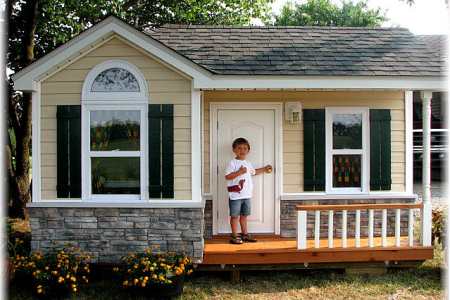 A mother from China has reportedly purchased a $6.5 million New York City apartment for her 2-year-old daughter. The woman has remained anonymous, but Sotheby’s senior vice president Kevin Brown said the woman purchased the apartment for her daughter’s future college years at an American university.
A mother from China has reportedly purchased a $6.5 million New York City apartment for her 2-year-old daughter. The woman has remained anonymous, but Sotheby’s senior vice president Kevin Brown said the woman purchased the apartment for her daughter’s future college years at an American university.
"[The woman] said, well, her daughter was going to go to Columbia, or NYU, or maybe Harvard, and so she needed to be in the center of the city and that was why she was picking this one particular apartment," Brown told the Chinese broadcaster CCTV. "So I said: 'Oh, how old is your daughter?' And she said: 'Well, she's 2.' And I was just shocked."
The apartment will be located inside the 90-floor glass skyscraper, One57 tower, which is to become the tallest residential building in New York when it is completed next year.
Source: “Chinese Mom Reportedly Buys $6.5 Million Apartment For Toddler,” AOL Real Estate (March 28, 2013)
Are First-Time Buyers Being Shut Out?
Speaking from the trenches, I can honestly say it's hard to find buyers home right now. There are multiple offers and investors who offer in cash! Yet, it's not impossible! Call me today for more info and insight on what you may be facing as a buyer! Laura Key 310.866.8422
Across the country, first-time home buyers have been putting in offers on homes, but many of them keep losing out.
One working mother says she’s put in 30 offers on homes in the $100,000 range in the Atlanta area, bidding $2,500 to $3,000 above the asking price, but each time she’s been outbid. “We have to be on top of the game and be able to drop everything and check out a house or it will be gone,” says another couple in Alexandria, Va.
Tight housing inventories are playing a role. For example, in Boston home listings are down 57 percent and in Atlanta area home listings have dropped nearly 40 percent in the past year.
Also, “investors have been pushing home prices higher faster than expected,” Diana Olick reports for NBC. “But the higher prices get, the more investors may get out, because they won’t be able to find such great bargains any more. That in turn will let regular buyers back in, even if they do have to pay a little more to own.”
Source: “First-time Buyers Struggle as Home Prices Rise,” NBC (March 26, 2013)
Search SoCal homes for free from my Facebook page! www.Facebook.com/RealtyGoddess
5 Things You Forgot to Clean in Your Bathroom
Your bathroom, one of the rooms you clean most, hides areas that rarely see a scrub brush. It’s time to tackle these 5 nasty spots you probably forgot.
But we presume you or someone else regularly swishes out the toilets, wipes out the tubs and sinks, and mops your bathroom flooring.
But you may be missing some critical areas. With the help of Kristi Mailloux, president ofMolly Maid, we’ve compiled a list of 5 bathroom spots home owners often forget to clean:
1. Showerheads: A warm white vinegar bath will get rid of mineral deposits, making yourlow-flow shower head flow even lower. Let the showerhead soak for about 20 minutes, then poke a paperclip into shower head holes still clogged. Scrub with an old toothbrush, then rinse and repeat if necessary.
2. Toilet bases: Mildew can grow on the caulking around the base of your toilet. Spray with white vinegar or disinfecting household cleaner, then scrub with a hard-bristled brush. Dry thoroughly.
3. Shower curtains: Clean soap scum and mildew from plastic shower curtains by tossing them into your washer on the gentle and cold (never hot!) water cycle, with detergent and ½ cup vinegar. If mildew is present, add ½ cup of bleach instead of vinegar. Toss a couple of large towels into the machine to act as scrubbers. Hang curtains back on your shower curtain rod, spread them out, and let them drip-dry. If you turn on the bathroom fan, they’ll dry faster.
4. Drains: We don’t usually pay much attention to drains until they’re clogged. But all year your hair, toothpaste, shampoo, and conditioner are building up in sink and tub drains. Remove the stopper — unscrew the shower drain — and clear away obvious gunk, like hair and soap. Soak the drain in vinegar to clear away mineral deposits. Then, pour boiling water, or a mixture of ½ cup white vinegar and ½ cup baking soda, down the drain, which will bubble away crud sticking to pipes.
5. Medicine cabinet: Throw out prescription and over-the-counter drugs you no longer need or want. But don’t dump them down the drain, where they become part of the watershed, or into the trash, where anyone can fetch them out. Instead, take them to a local collection site, often at police or fire stations. Or check U.S. Drug Enforcement Administration’s National Take Back Initiative’s website for dates and sites for their next collection.
Bonus tip: Just for the fun of it, launder those powder room towels you won’t let anyone use. And be sure to clean out your dryer’s lint filter when you’re finished.
Source: houselogic.com written by Lisa Kaplan Gordon Published March 30, 2012
Selling your home is a big decision! Make sure you have someone who can help you get the most value out of your home! Call me today at 310.866.8422 Laura Key
Buying a House at Foreclosure Auction is Risky Business
You can buy a home at a significant discount at a foreclosure auction, but you’ll face a host of challenges. Don’t get burned; be solutions-ready.
Start by understanding the foreclosure auction rules for your area. State and local governments set their own rules for such factors as:
- Bidding process
- Amount of deposit
- Where the auction is held
- Whether the home owners can get their properties back after the sale
You can learn about the process in your area by talking to officials at your county tax department or to a REALTOR®.
Although foreclosure auctions follow local rules, there are some universal challenges you’ll face no matter where you shop for foreclosed properties. Here’s how to solve them.
Solutions to 6 common foreclosure auction challenges
1. Challenge: Getting reliable information about foreclosure sales. Many companies charge fees to send you lists of foreclosures that may not be current, or sell expensive foreclosure-buying “systems” that promise to teach you how to make millions in real estate.
Solution: Most foreclosure sales are still announced in local newspapers. And you can get accurate information about buying foreclosures from reliable book publishers:
Foreclosure Investing For Dummies (For Dummies, 2007)
Keys To Buying Foreclosed and Bargain Homes (Barron's Educational Series, 2008)
2. Challenge: You can’t get inside the property before the auction to inspect it forstructural problems and repairs. Many foreclosure auction properties are in bad shape because the owners couldn’t afford the upkeep. And sometimes angry home owners purposely damage the property to punish the foreclosing lender.
Solution: Walk around the home to check its exterior condition. If it’s vacant, look through the windows. Ask the neighbors what they know about the property. If it was a rental, check the inspection records on file with the local government.
You can safely assume there’s something wrong with any house sold at a foreclosure auction, so cover yourself by bidding no more than 70% of the home's market value.
3. Challenge: You need to figure out the market value of the house to prepare your bid. Some foreclosure auction announcements include information about the size of the original mortgage. That’s not how much the house is worth or even what the owners owe now. If the current owners bought at the top of the market, their mortgage may be more than the home is worth in today’s market and they could owe even more if there’s a second mortgage on the house.
Solution: Commission your real estate agent to do a broker’s price opinion (BPO) on the home you want to bid on. The BPO will show you comparable sales, telling you what similar, nearby homes that weren’t foreclosure sales have recently sold for.
Bid well below those comparable sales to leave yourself room to pay for repairs and unexpected problems. Ask the agency that runs the auction how to find winning bid amounts from recent auctions. Use that information to guide your current bid, too. A look at local tax and assessment records will tell you more about previous and current auction properties, like square footage and lot size.
4. Challenge: You don’t know if there are liens on the home. Some auctions don’t give you clean title to the property, meaning liens from the federal government or other entities may not be removed during the foreclosure auction process. You’d have to pay off those liens if you won the property.
Solution: Focus your efforts on two or three homes in desirable locations. To find out about any liens, pay a real estate attorney to run a title search on each property and issue a commitment to insure the title after purchase. Ask how the policy treats liens filed between the time of the search and the time you close.
A less-expensive option: Hire an independent title search professional called an abstracteror an online company. Both search options should be under $200, title insurance costs vary by state.
5. Challenge: You have to pay cash and pay it quickly. Most auctions require bidders to come up with the full purchase price in cash within 30 days.
Solution: Don’t count on getting a mortgage that fast. Look for other sources of cash that make financial sense for you.
- Take out a home equity line of credit or do a cash-out refinance.
- Tap retirement accounts, provided it makes sense for you from a tax perspective.
- Work with other investors to fund a partnership to invest in foreclosed homes.
6. Challenge: You’re in love with a house that you’re aware is headed to foreclosure, but you’re afraid to bid on it at the foreclosure auction because you know nothing about the process.
Solution #1: Contact the owners and offer to purchase the home as a short sale. That’s where the bank agrees to let the owners sell for less than what they owe on the mortgage.
Solution #2: You may be able to buy the house after the foreclosure sale. Foreclosure sales are run by a government agency (often the sheriff), which collects the money from the highest bidder and gives it to the bank to pay off the mortgage.
Banks will often bid at the sale to make sure someone doesn’t pay less than the house is worth (translation: not giving the bank enough money to satisfy the mortgage).
If the bank is the high bidder, it’ll take title to the house and put it up for sale. Then, buying the home is just like buying any other house. You can buy an owner’s title insurance policy so you know the house is free of liens; you can get a home inspection to check for needed repairs; and you’ll have plenty of time to line up your financing.
A real estate agent can alert you the day the bank puts the home on the market, so you can submit your purchase offer.
Since the bank pays the real estate agent’s fees, you likely won’t pay more than you'd have bid at the foreclosure auction to outbid the bank, and you’ll avoid most of the risks and unknowns of buying at the auction.
Ready to purchase your home! Start by taking one of my Free Home Buyer Seminars! Your will learn everything you need to know from Lending to Escrow! Call to schedule today! Laura Key 310.866.8422
Source: houselogic.com - Marcia Jedd, who covers a range of home and real estate issues, dreams of stumbling upon a foreclosure sale where a vacation lake cabin in northern Minnesota is being sold free and clear at a deep discount. Her bylines include many local and national publications, including FrontDoor.com, HGTVPro.com, Kitchen & Bath Ideas, and Professional Builder.
8 Dirty Secrets in Your Home
Steel yourself: We help you expose — and purge — your home’s dirtiest little secrets.
Deep breath ...
1. Cruddy undersides of rugs 2. Disgusting disposal 3. Greasy kitchen vent hood 4. Crumby kitchen crevices 5. Grimy fans and ceilings 6. Grungy toilets 7. Debris-filled crawlspace 8. Linty dryer vents
1. Cruddy undersides of rugs
Look under your area rugs for a nasty surprise -- a sea of grit and dust -- despite regular vacuuming. What to do:
- Move furniture, fold over the rug, and vacuum dirt and dust from its underside. Sweep and mop the floor, too.
- While you’re under the hood, check the rug’s condition. If there’s no staining or discoloration, a good floor cleaning and vacuuming of the rug’s underside is enough.
- If pets, kids, or wine have left their mark, invest in a professional cleaning. A pro will run between $1.50 and $3 per square foot of rug, depending on the type of rug. Delicate natural fibers are usually more costly to clean than synthetics.
2. Disgusting disposal
Your kitchen has more germs than even your bathroom. And your garbage disposal and its splash guard flaps just might be the most disgusting place in the house — slimy, smelly, and befouled with old food. What to do:
- Scrub the underside of the rubber flaps with an old toothbrush and warm, soapy water.
- Pour a 1:1 ratio of white distilled white vinegar and baking soda down the drain. Let it sit overnight and flush with boiling water to sanitize.
- Toss frozen cubes of white vinegar (just freeze it in an ice tray) down the disposal while it’s running. This will sharpen and sanitize the disposal’s grinding blades.
- Freshen up the drain with slices of lemon or other citrus fruit. Peels are OK, but if you have fruit to spare, the citrus acids will help disinfect and freshen.
3. Greasy kitchen vent hood
Your range vent hood works hard to absorb smoke, steam, and grease. Just like you change air filters to extend the life of your HVAC, you should clean the vent filter. Not only will this make the vent more efficient, it’s a safety measure. Should you have a grease fire, a greasy hood and filter can spread the fire into your home’s duct work. What to do:
- Remove the hood filter according to directions for your vent hood model. If you don’t have the paper manual anymore, search online for a copy.
- Soak the filter in a kitchen-grade degreaser.
- Once most of the grease has dissolved, rinse the filter with soapy water.
- While you’re soaking the filter, clean the greasy interior of your vent hood.
- Use a kitchen-grade degreaser for the hood like the one you’re soaking the filter in.
- Wipe the hood's interior with a sponge or rag.
4. Crumby kitchen crevices
No matter how spotless your kitchen surfaces are, crumbs, morsels, and drips of stuff have fallen into the crannies between appliances and countertops, tempting bugs and vermin.What to do:
- For appliances with a bit of ground clearance, like a refrigerator, use the vacuum crevice attachment to suck out the yuck.
- For appliances with less room to maneuver, attach microfiber cloths to a yardstick with rubber bands. Slide and grab under and between appliances.
- Sneak an old-school feather duster between counter cracks or under appliances. Get one with an extra-long handle ($15-$25) or use a flexible duster specifically designed to slide under appliances.
5. Grimy fans and ceilings
Dispatching the out-of-sight, out-of-mind dust (sloughed-off skin cells, dust mites, and outdoor allergans) that lives on ceiling fans and light fixtures means better indoor air quality and fewer allergy problems. What to do:
- Dampen the inside of a pillowcase and slide it over each ceiling fan blade. As you slide it off, run your hands along the sides of the blade to wipe up dirt and dust so the dreck doesn’t rain down on you. Get a spotter if you’re balancing on a ladder or chair.
- For less-dusty ceiling fans, use a microfiber duster that'll grab the blades. ($7-$20)
- For oily or grimy buildup on ceilings, especially in the kitchen or bathroom, run a flat mop tool with a microfiber or soap-cloth attachment along the ceiling. Dish soap will do nicely.
- Remove light shades or covers from ceiling fixtures to wipe out dust and bugs. But turn the light off first.
6. Grungy toilets
You’re not getting down-and-dirty with your toilet until you scrub where the commode meets the bathroom floor. What to do:
- Check that the caulk at the base of the toilet is sealing the area. If it's worn, remove the remaining caulk with a utility knife. Then re-seal it. For extra germ-fighting, choose a caulk with Microban.
- Slide a feather duster behind the tank to brush off any dirt or dust, and use a sponge or damp microfiber cloth to scrub all the way around the porcelain base.
7. Debris-filled crawlspace
No one wants to crawl around under the house — except bugs and rodents. If you suspect critters are playing house, skip the DIY and consult a pro. Otherwise, it’s a good idea to check your crawlspace annually to check for water penetration and clean out debris. What to do:
- Wear personal protective equipment, such as coveralls, a dust-mask, goggles, and gloves.
- If you see mold, don’t disturb it. Call a professional mold remediation company.
- If you don’t see mold, check your vapor barrier for holes, deterioration, or uncovered areas. If you’re handy and comfortable with working in cramped crawlspace conditions, you can fix it yourself with supplies from your local hardware or home store. Otherwise, call a handyman. If the problem seems more extensive (major holes or large uncovered areas), call a foundation specialist.
- Make sure there’s no standing water on top of the vapor barrier. That could mean water is coming from leaking pipes or gutters. It’s a recipe for mold and rot. Call a pro who specializes in foundation or crawlspace work pronto.
- Push out trash through the nearest vent or access door. When you go outside to collect the debris, secure vents and doors so nothing else will blow, crawl, or slither in.
8. Linty dryer vents
This is one of the most important dirty jobs, because cleaning your clothes dryer’s lint trap and vents will extend its life, improve its efficiency, and save your life. Clothes dryers cause more than 15,000 structural fires, injuring 400 and killing 15 people on average each year. "Failure to clean" is the leading contributing factor to these fires.
What to do:
- Use a dryer vent cleaner (about $15), a long, flexible, thick metal cord that snakes through the dryer vent’s dark corridors, to sweep out lint and dust.
- Use your vacuum’s crevice tool to suck out hangers on in the lint trap.
- Vacuum underneath and around the back of the dryer to clear out any remaining lint colonies.
The real estate market has changed? What does this mean to you as a buyer or seller? Call me today with your questions! Laura Key 310.866.8422
1.7 Million Home Owners Regain Equity in 2012
Remember when you asked me if the market has hit bottom yet? Yes Sir - Yes Ma'am we have and now it's bouncing back up! Hurry and get your property before it's too late! Laura Key 310.866.8422
Rising home prices have helped more home owners make their way above water again, with 1.7 million residential properties regaining equity in 2012, according to the latest figures from CoreLogic. The number of mortgaged home owners with equity now stands at 38.1 million.
More home owners are expected to soon join them: About 1.8 million homes will regain equity if home prices rise by another 5 percent—which most economists have forecast for this year.
“In the fourth quarter we again saw an improvement in the equity position of households,” says Mark Fleming, chief economist for CoreLogic. “Housing market improvements, particularly in the hardest hit states, are the catalyst for households to regain equity and become participants in 2013’s housing market.”
While the numbers are improving, many home owners are still underwater: About 21.5 percent—or 10.4 million—of all residential properties with a mortgage still retained negative equity at the end of the fourth quarter of 2012. That number is down 22 percent, year-over-year.
Nevada has the highest percentage of homes with negative equity (at 52.4%), followed by Florida (40.2%), Arizona (34.9%), Georgia (33.8%), and Michigan (31.9%). These five states alone account for 32.7 percent of the total amount of negative home equity in the U.S., according to CoreLogic.
Some additional findings from CoreLogic’s latest report:
- The majority of homes that have equity tend to be on the higher end of the real estate market. Eighty-six percent of homes valued at more than $200,000 have equity, compared to 72 percent of home less than $200,000.
- About 3.9 million home owners with negative equity have both first and second liens. Their average mortgage balance is $296,000 and their average underwater amount is $80,000.
Source: CoreLogic
How to Assess the Real Cost of a Fixer-Upper House
When you buy a fixer-upper house, you can save a ton of money, or get yourself in a financial fix. People see shows on television and think it's easy to purchase a home that needs fixing. Know what you are getting into before you put the money down on the table! Call me with your questions Laura Key 310.866.8422
1. Decide what you can do yourself
TV remodeling shows make home improvement work look like a snap. In the real world, attempting a difficult remodeling job that you don’t know how to do will take longer than you think and can lead to less-than-professional results that won’t increase the value of your fixer-upper house.
- Do you really have the skills to do it? Some tasks, like stripping wallpaper and painting, are relatively easy. Others, like electrical work, can be dangerous when done by amateurs.
- Do you really have the time and desire to do it? Can you take time off work to renovate your fixer-upper house? If not, will you be stressed out by living in a work zone for months while you complete projects on the weekends?
2. Price the cost of repairs and remodeling before you make an offer
- Get your contractor into the house to do a walk-through, so he can give you a written cost estimate on the tasks he’s going to do.
- If you’re doing the work yourself, price the supplies.
- Either way, tack on 10% to 20% to cover unforeseen problems that often arise with a fixer-upper house.
3. Check permit costs
- Ask local officials if the work you’re going to do requires a permit and how much that permit costs. Doing work without a permit may save money, but it'll cause problems when you resell your home.
- Decide if you want to get the permits yourself or have the contractor arrange for them. Getting permits can be time-consuming and frustrating. Inspectors may force you to do additional work, or change the way you want to do a project, before they give you the permit.
- Factor the time and aggravation of permits into your plans.
4. Doublecheck pricing on structural work
If your fixer-upper home needs major structural work, hire a structural engineer for $500 to $700 to inspect the home before you put in an offer so you can be confident you’ve uncovered and conservatively budgeted for the full extent of the problems.
Get written estimates for repairs before you commit to buying a home with structural issues.
Don't purchase a home that needs major structural work unless:
- You’re getting it at a steep discount
- You’re sure you’ve uncovered the extent of the problem
- You know the problem can be fixed
- You have a binding written estimate for the repairs
5. Check the cost of financing
Be sure you have enough money for a downpayment, closing costs, and repairs without draining your savings.
If you’re planning to fund the repairs with a home equity or home improvement loan:
- Get yourself pre-approved for both loans before you make an offer.
- Make the deal contingent on getting both the purchase money loan and the renovation money loan, so you’re not forced to close the sale when you have no loan to fix the house.
- Consider the Federal Housing Administration’s Section 203(k) program, which is designed to help home owners who are purchasing or refinancing a home that needs rehabilitation. The program wraps the purchase/refinance and rehabilitation costs into a single mortgage. To qualify for the loan, the total value of the property must fall within the FHA mortgage limit for your area, as with other FHA loans. A streamlined 203(k) program provides an additional amount for rehabilitation, up to $35,000, on top of an existing mortgage. It’s a simpler process than obtaining the standard 203(k).
6. Calculate your fair purchase offer
Take the fair market value of the property (what it would be worth if it were in good condition and remodeled to current tastes) and subtract the upgrade and repair costs.
For example: Your target fixer-upper house has a 1960s kitchen, metallic wallpaper, shag carpet, and high levels of radon in the basement.
Your comparison house, in the same subdivision, sold last month for $200,000. That house had a newer kitchen, no wallpaper, was recently recarpeted, and has a radon mitigation system in its basement.
The cost to remodel the kitchen, remove the wallpaper, carpet the house, and put in a radon mitigation system is $40,000. Your bid for the house should be $160,000.
Ask your real estate agent if it’s a good idea to share your cost estimates with the sellers, to prove your offer is fair.
7. Include inspection contingencies in your offer
Don’t rely on your friends or your contractor to eyeball your fixer-upper house. Hire pros to do common inspections like:
- Home inspection. This is key in a fixer-upper assessment. The home inspector will uncover hidden issues in need of replacement or repair. You may know you want to replace those 1970s kitchen cabinets, but the home inspector has a meter that will detect the water leak behind them.
- Radon, mold, lead-based paint
- Septic and well
- Pest
Most home inspection contingencies let you go back to the sellers and ask them to do the repairs, or give you cash at closing to pay for the repairs. The seller can also opt to simply back out of the deal, as can you, if the inspection turns up something you don’t want to deal with.
If that happens, this isn’t the right fixer-upper house for you. Go back to the top of this list and start again.
Source: www.houselogic.com - G.M. Filisko is an attorney and award-winning writer whose parents bought and renovated a fixer-upper when she was a teen. A regular contributor to many national publications including Bankrate.com, REALTOR® Magazine, and the American Bar Association Journal, she specializes in real estate, business, personal finance, and legal topics.
Cleaning House: Secrets of a Truly Deep Clean
Spring Cleaning Tips to help keep your home in tip-top shape! These little tips also help when you are selling a home! Buyers want to see a clean home that they can imagine living in! Call me today for your free home evaluation! Laura Key 310.866.8422
Deep clean your house and you’ll brighten rooms and help maintain your home’s value.
De-bug the light fixtures
See that bug burial ground within your overhead fixtures? Turn off the lights and carefully remove fixture covers, dump out flies and wash with hot soapy water. While you’re up there, dust bulbs. Dry everything thoroughly before replacing the cover.
Vacuum heat vents and registers
Dirt and dust build up in heat vents and along register blades. Vents also are great receptacles for coins and missing buttons. Unscrew vent covers from walls or pluck them from floors, remove foreign objects, and vacuum inside the vent. Clean grates with a damp cloth and screw back tightly.
Polish hardware
To deep clean brass door hinges, handles, and cabinet knobs, thoroughly wipe with a damp microfiber cloth, then polish with Wright’s or Weiman brass cleaner ($4). Dish soap shines up glass or stainless steel knobs. Use a Q-tip to detail the ornamental filigree on knobs and handles.
Replace grungy switch plates
Any amateur can wipe a few fingerprints off cover plates that hide light switches, electric outlets, phone jacks, and cable outlets. But only deep cleaners happily remove plates to vacuum and swipe the gunk behind. (OK, we’re a little OCD when it comes to dirt!) Make sure cover plates are straight when you replace them. And pitch plates that are beyond the help of even deep cleaning. New ones cost less than $2 each.
Neaten weather stripping
Peeling, drooping weather stripping on doors and windows makes rooms look old. If the strip still has some life, nail or glue it back. If it’s hopeless, cut out and replace sections, or just pull the whole thing off and start new. A 10-ft. roll of foam weather stripping costs $8; 16-ft. vinyl costs about $15.
Replace stove drip pans
Some drip pans are beyond the scrub brush. Replacing them costs about $3 each and instantly freshens your stove.
Source: Houselogic.com By Jane Hoback Published Jan 14, 2011
4 Reasons Your Listing Might Not Be Selling
Real Estate could be one of your major investments! Make sure you get the most value on return. Interested in seeing how much your home is worth? Call me for a FREE Comparative Market Analysis. Laura Key 310.866-8422
Do you have a home lingering on the market? MSN Real Estate recently polled real estate professionals to find some of the most common reasons why some properties won’t sell, besides trying to overcome a poor location.
Here are four common reasons listings don’t sell in a timely manner, according to the MSN survey:
- Unreasonable price: “It’s always price for condition or price for location,” says Kathy Opperman, a broker-owner with Century 21 Alliance in Philadelphia. “That’s one of the main reasons [homes] sit.” Some sellers are just unrealistic about what their house can truly fetch, or they may be underwater and just unable to lower their price tag. “In my market, the only reason a property would stay on the market for longer than three months would be that the price is too high,” Ron Redfern, a real estate professional from Greeley, Colo., told MSN Real Estate. “Price will overcome any objection.”
- Bad decor: Loud patterns, bold colors, and dated decor styles can distract home buyers. For example, agents say that mirrored walls, cheap wood paneling, and 1970s kitchens can be turn-offs. To try to appeal to the widest buying pool, agents advise clients to stay neutral with their design, give buyers a “minimalist canvas” for them to project their own tastes on.
- Awkward floor plan or missing necessities: Strange or dated floorplans may also make a home linger, such as older homes where you have to walk through a bedroom to get to a second bedroom, MSN Real Estate notes. One home in Catskill, N.Y., has lingered on the market for more than four years because it’s missing a driveway.
- Awful photos: If your listing has yet to sell, you may want to revisit the photos you're using to present it on the MLS. For example, one Chicago listing showed dirty clothes and clutter in the photo, which may prompt buyers to question the hygiene of the rest of the home, as well as assume it has a lack of storage. Be choosy about the photos you upload to the MLS, and remember that less can be more, Opperman says. Have photos showcase the best rooms and features of the home. "If a buyer isn't excited about a home after seeing it online, they won't want to see it in person," Opperman says.
Source: “Listing Losers: 8 Reasons Your Home Isn’t Selling and What to do About It,” MSN Real Estate (March 13, 2013)
Fast California Real Estate Stats
The market has changed! What does this mean to you as a buyer or a seller? Ask me! Laura.A.Key@gmail.com or 310.866.8422
- Calif. median home price: January 2013: $337,040 (Source: C.A.R.)
- Calif. highest median home price by region/county January 2013: Marin, $799,110 (Source: C.A.R.)
- Calif. lowest median home price by region/county January 2013: Madera, $98,330 (Source: C.A.R.)
- Calif. Pending Home Sales Index: December 2012: 82.3 , down 20.5 percent from November's 103.5.
- Calif. Traditional Housing Affordability Index: Fourth quarter 2012: 48 percent (Source: C.A.R.)
- Mortgage rates: Week ending 3/7/2013 30-yr. fixed: 3.52% fees/points: 0.7% 15-yr. fixed: 2.76% fees/points: 0.7% 1-yr. adjustable: 2.63% Fees/points: 0.3% (Source: Freddie Mac)
Keep Your Home California Debuts New Interactive Website
See if this new program can help you save your home. Call me with questions and other possible options!
- Unemployment Mortgage Assistance Program: Homeowners can receive as much as $3,000 per month in mortgage assistance for up to nine months. Homeowners must be currently receiving or approved to receive jobless benefits from the state Employment Development Department.
- Mortgage Reinstatement Assistance Program: Homeowners can receive as much as $25,000 in assistance to help them “catch up” on their past-due mortgage payments. Homeowners must have suffered a financial hardship and be able to make their mortgage payments going forward.
- Principal Reduction Program: Homeowners can get as much as $100,000 in principal reduction. To qualify, the homeowner must have suffered a financial hardship and be able to make their mortgage payments in the future. Also, the current market value of the home must be less than what is owed on the mortgage, that is, “underwater.”
- Transition Assistance Program: Homeowners can collect up to $5,000 to cover relocation costs as part of a servicer-approved short sale or deed-in-lieu of foreclosure of their home.
After Central Air, Buyers Want Walk-In Closets
I have to agree with this article. What is more important to you for your new home? Laura.A.Key@gmail.com
Recent home buyers who want a walk-in closet but didn’t get one in their home say they’re willing to spend $1,350 for one. That’s just one of the important findings in the 2013 Profile of Buyers’ Home Feature Preferences, released today by the National Association of REALTORS®.
Buyers who wanted new kitchen appliances but didn’t get them say they’re willing to spend $1,840 for them. Those who wanted air conditioning are willing to spend $2,520.
The report looks at 33 home feature preferences based on what a representative sample of U.S. households that bought between 2010 and 2012 say they value. Just over 2,000 households participated.
Among the findings: Households in the South tend to want the biggest and newest homes, and they like wooded lots. Those in the Northeast are most likely to like hardwood floors. First-time buyers and single women are big buyers of older homes. Households with children and move-up buyers like larger homes.
The report also contains these tidbits on buyer preferences:
· Among buyers 55 and older, 42 percent want a single-level home, compared to just 11 percent of buyers under age 35. Single women also tend to place importance on single-level homes.
· Single men want finished basements.
· Single men and married couples place importance on new kitchen appliances.
· Among all 33 home features in the survey, central air conditioning is the most important to the most buyers; 65 percent consider this very important.
· The next most important feature is a walk-in closet in the master bedroom; 39 percent considered this very important.
· Also important — buying a home that’s cable-, satellite TV-, or Internet-ready.
· Thirty-two percent of buyers say they’re willing to pay a median of $5,420 more for a residence that also has waterfront property, and 40 percent say they’re willing to pay a median of $5,020 more for a home that’s less than five years old.
— Robert Freedman, REALTOR® Magazine
Ready to find your dream home! Search for free! No signup, no hassle, just a good solid resource. Let me earn your business! www.KeyCaliforniaHomes.com
Adding Instant Value to Your Home
Want to add value to your home immediately? This simple solution will help! Ready to sell? Contact me to obtain a FREE value report on your home! Laura.A.Key@gmail.com
Do you know what the best way to add value you to your home is? The answer might surprise you because it’s also the cheapest – cleaning/decluttering. It’s true. For the cost of a bottle of household cleaner and some elbow grease you can give the value of your home an immediate boost. In fact, clean, clutter free homes are more likely to get or even exceed their asking price. It’s amazing how shiny windows, and dust free doors, windows, and baseboards can impress potential buyers , sure cleaning and getting rid of the clutter might not be a lot of fun, but sending the extra money you get for your house will be!
Another Big Leap for Home Prices
The market has changed! Buyers need to get on board before prices rise beyond their limits! Call me today to discuss your options! Laura Key 310.866.8422
Another home price index is showing home prices surging: CoreLogic’s home price index shows that home prices nationwide in January rose 9.7 percent year-over-year, posting their largest percentage increase since April 2006.
It was the 11th consecutive month of month-over-month increases in existing-home sales, according to CoreLogic’s index.
"Home prices continued to gather steam across a broad swath of the country in January, continuing the positive trend we saw during most of 2012," says Anand Nallathambi, president and CEO of CoreLogic. "Many states across the western U.S. and along the East Coast saw average price gains of more than 6 percent, which is likely to boost home sale activity into the first half of 2013.”
The states seeing the biggest year-over-year rises in home prices in January were Arizona (20.1%), Nevada (17.4%), Idaho (14.9%), and California (14.1%), according to CoreLogic’s index. The only states not seeing year-over-year price increases were Delaware (-0.1%) and Illinois (-0.4%).






